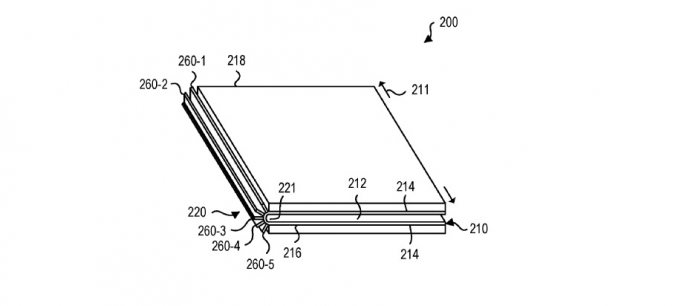Interestingly, while Microsoft has a history of missing trends by waiting too long, the company’s patience in folding screen may be a good idea. Samsung’s Galaxy Fold has shown that tech ambition maybe outpaced reality slightly. Even devices from Huawei and Lenovo still lack what seems to be a final touch. Not least, visible creases on the screens. Microsoft has decided to continue to R&D its own folding screen hardware, which is known as Centaurus. A newly discovered patent highlights how the company plans to deal with crease issues on folding screens. Titled, “MOVEABLE DISPLAY SUPPORTS, COMPUTING DEVICES USING SAME, AND METHODS OF USE,” the patent was filed in 2017 and published recently. Microsoft describes creating a movable support for folding screen. This attachment would allow the display to be locked a specific direction, preventing one of the main causes of creasing. “The computing device includes a flexible display including a thin film transistor matrix having a front surface and a back surface,” Microsoft Explains. “A moveable display support is included and is connected to the back surface of the display and is configured to limit bending in one direction to a first bend radius while maintaining strain on the thin film transistor matrix below a predetermined amount of strain by elongating the moveable display support during bending. In another implementation, a computing device is described. The computing device includes a flexible display having a front surface and a back surface. The computing device includes a moveable display support connected to the back surface of the display. The moveable display support is formed by a plurality of unit cells.”
Ongoing Development
As usual with patents, there are no guarantees that the tech described will ever make it to a finalized product. However, this does show Microsoft is continuing to work on folding screens. Furthermore, it is clear the company is looking at ways to solve some of the issues facing early iterations of the technology.




